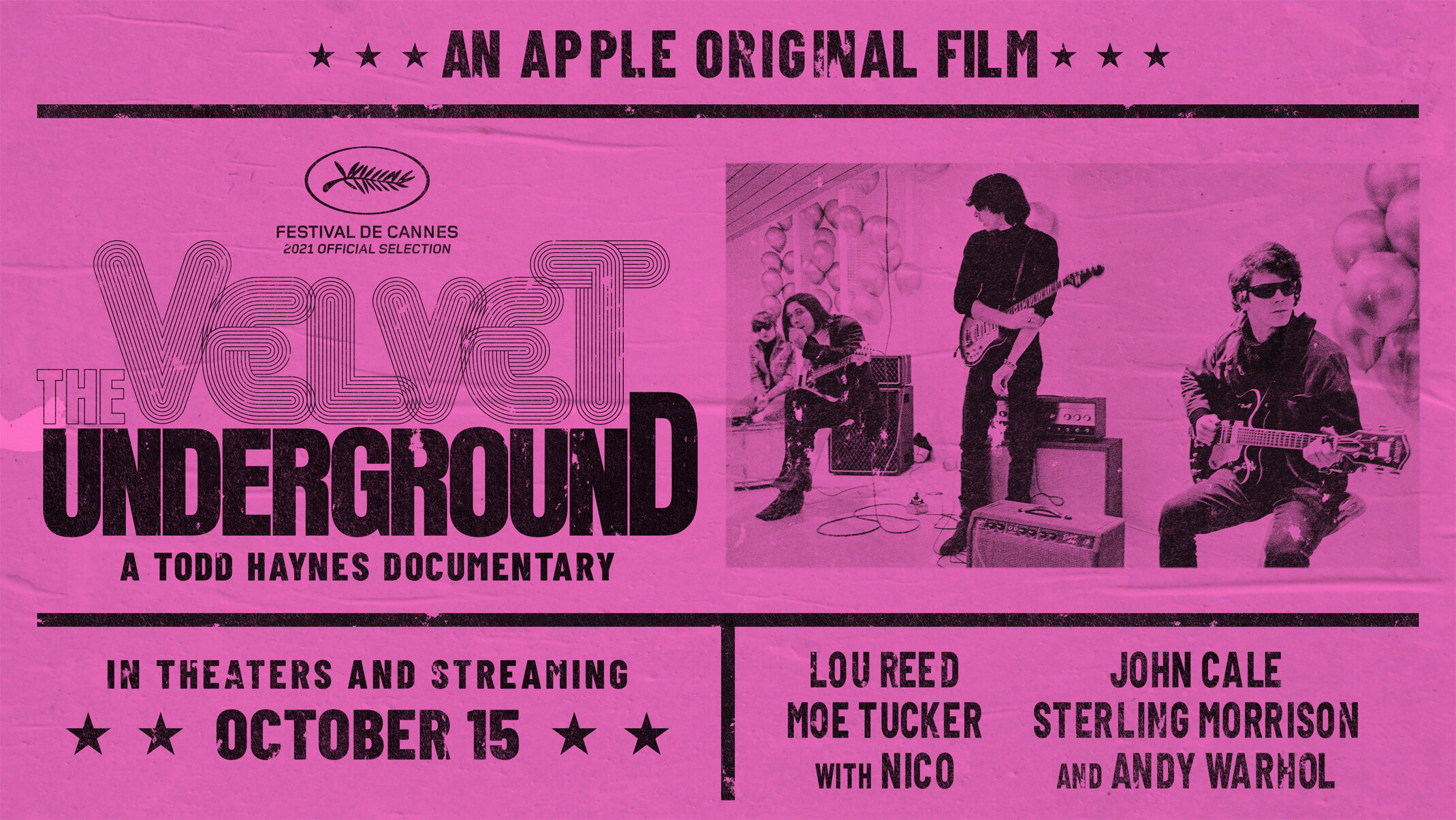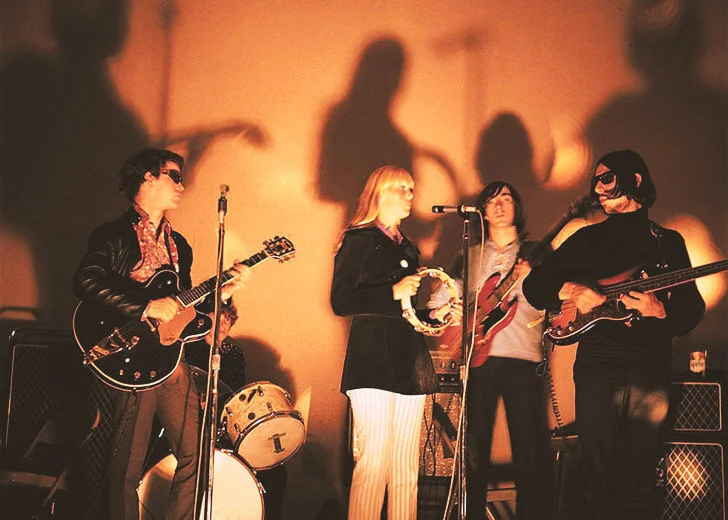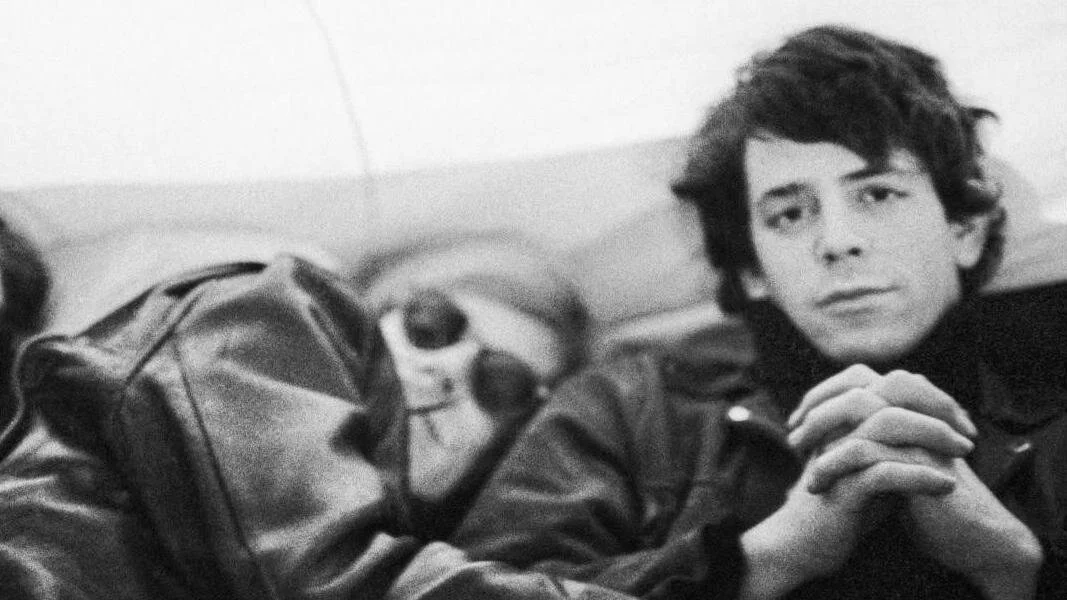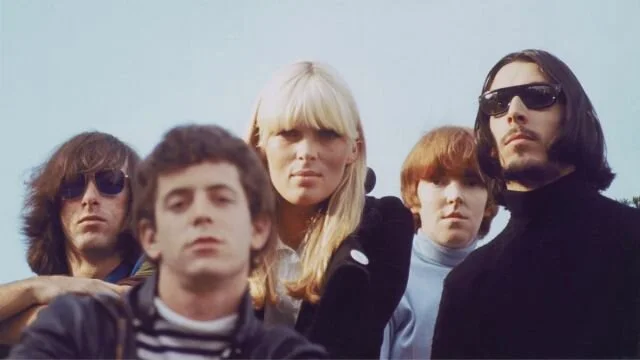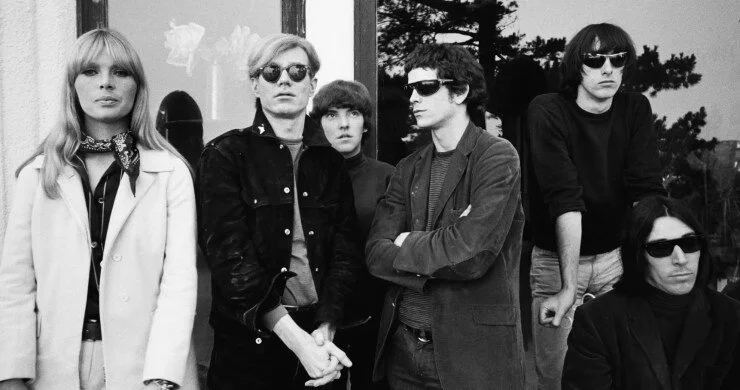Director: Todd Haynes
Cast: Lou Reed, John Cale, Maureen Ann Tucker, & Sterling Morrison
By Jen Johans
Dig the scene. In the middle of the 1960s, a former New York Polish wedding and social hall nicknamed The Dom could for weeks at a time be the musical residency of The Velvet Underground as they played night after night with the experimental films of Andy Warhol and company projected larger-than-life on the wall behind them. Colorful, spinning psychedelic lights that bounced off surfaces in all directions were usually operated by the first person who volunteered when Warhol asked if anyone knew how to work the equipment. Occasionally this led to mishaps where bulbs broke and spotlights fell from the balcony when they were operated by someone with more confidence and amphetamines than any real technical know-how.
Ignoring this, on the ballroom floor below, patrons danced – not just people, but a wide cross-section of East Coasters. Filling The Dom, you could find bikers, drag queens, juvenile delinquents, Harvard professors, art collectors, poets, leftover Beats who hadn't gone west to San Francisco, the kind of arty junkies who flooded in and out of The Factory throughout the decade, future “Chelsea Girls,” as well as Warhol's influential friends like Jackie Kennedy and Walter Cronkite. On a given evening, they'd be there side-by-side, milling and dancing next to some broken lights, next to someone with broken dreams, listening to some intentionally broken chords as they struggled not to break amid the overwhelm of polka dots, spirals, mazes, and avant-garde imagery going on around them.
It was a scene of too much too-muchness. But strip away the visual spectacle and "anti-elite elite" hobnobbing, just focus on the sound, and the same can be said for the music of the Underground. A sort of dissonant bubble-gum rockabilly filled with viola strings that sounded like saws, drums straight out of Bo Diddley, the droning, deliberate delivery of guest vocalist Nico, a searing guitar, and stream-of-consciousness lyrics about drugs, sex, and the New York streets outside, the sound alone was brutal, beautiful, bold, brilliant, and played on all the senses at once.
With so much to take in, is it any wonder it didn't last? Is it any wonder it was chaos? And is it any wonder that it still sounds so fresh – so much like the act of creativity in process – that it still inspires us fifty-five years later?
Seeking to not only encapsulate and explore the roots and history of both the band and the scene from the people who lived to tell the tale but also do so in a way that brings a night at The Dom or The Factory to viewers watching it today, with “The Velvet Underground,” director Todd Haynes has released his first full-length musical documentary. And fittingly, especially from a man who once told the Karen Carpenter story with Barbie dolls and made the nonlinear, arty film “I'm Not There” about Bob Dylan, it's much more avant-garde than it is VH1 Behind the Music.
It opens with dueling, yet complementary narratives of The Velvet Underground's own version of Wilson and Love, Lennon and McCartney, Jagger and Richards, and Page and Plant. In Haynes' film, portraits of the band's eventual founders Lou Reed and John Cale as emotionally and creatively frustrated young artists emerge, which foreshadow both their future promise as well as the way that their two titanic personalities will only temporarily harmonize in mutual dissonance before they can hold that note no longer.
Paying the most attention to those two figures, with the scales tipping more in favor of the man who was with the band the longest in Reed, the documentary chronicles the way they came with ample baggage from vastly different backgrounds before impossibly finding one another in New York. Reed, then working as a fast songwriter and musician for hire, first collaborated with the Welsh-born multi-instrumentalist on an insanely catchy forgotten dance single called “The Ostrich,” but rather than a one-off thing, their passion for improvisational composition bonded the two right from the start.
While Reed, who sought inspiration in poets like Ginsberg and Rimbaud, longed to translate his raw, gritty, profane poetry into rock hits in a way similar to The Rolling Stones, Cale loved experimenting with new modes of expression using tones, drones, and dissonance, and spent his time studying with the avant-garde musicians of the day. Bonded by their otherness, their loathing of the mainstream, and determination to go against the status quo, once they got together with guitarist Sterling Morrison, and drummer Maureen “Mo” Tucker (replacing Angus MacLise), they sought to bring high art to the gutter, and still make it something people wanted to hear, whether they could dance to it or not.
From the in-name-only Warhol produced “Banana Album” with Nico to Reed eventually firing Warhol (without the band's input) so they could go on to push the limits even further with “White Light/White Heat” and more, this lineup was as revelatory as it was combustible.
Ego, attitudes, communication breakdown, and infighting – all accelerated by drugs, insecurity, posturing, jealousy, uncertainty, and the era – in the film, we're given an engrossing “he said," "she heard," "I think," "you recall,” overview of the band. And along the way, Haynes worries less about fact-checking, follow-ups, or sourcing certain claims than he does in making his “Velvet Underground” vibrate on a darkly intoxicating, dissonant frequency that we might've expected to come from Cale's viola or Morrison's guitar.
Like something straight out of The Dom, it's filled with art, imagery, and colorful flashing lights to the point that it should come with a warning for those with epilepsy or migraine light sensitivity. While admittedly, there are times I longed for more details about certain songs (“Heroin” gets the lion's share of the screen-time) as well as the post-Nico and Cale albums or more analysis of the personnel changes, it's all told with so much affection, color, and vigor that it immediately draws you in with its too much too-muchness. An exhaustively covered period in music and pop culture journalism, Haynes' version of the events adds more humanity, humor, and warmth to the proceedings than one might expect when contrasted by the coolly detached handling of the Velvets in past docs.
Feeling like we're with the band rather than just dryly reverential of Warhol, Cale, or Reed, there are no villains in “The Velvet Underground.” To this end, I applaud the decision here to invite Reed's sister to weigh in about the often biased chronicling of the shock treatment era in her brother's adolescence. Similarly, the film gives Nico more respect as a poet and professional than she normally receives, and treats Warhol as more of a friend, facilitator, and minor figure rather than the driving force behind the band, in a way that feels right and overdue. Also welcome is the way Haynes refuses to gloss over the drugs or the misogyny of The Factory that treated women as currency where their value came only in their physical appearance. Even if the latter gets a brief mention, it's reassuring that he's unwilling to simply romanticize all things Warhol as other filmmakers have done in the past and instead allow some of the degradation and darkness – incidentally the two things Reed liked in sex – to rightfully permeate this chronicling of events.
A labor of love by a filmmaker who's so enamored of the band and era that one of his earliest big studio movies for Miramax was the unfairly maligned glam rock opus “Velvet Goldmine,” “The Velvet Underground” is a documentary that, in tribute to its subject, is as artful as a film as it is experimental. Neither as dryly objective as a more academically minded PBS doc nor as full of insider-only information that those unfamiliar with the band won't still be able to appreciate, it's a seductive mix of both approaches plus something wholly its own. And to Haynes' great credit, “The Velvet Underground” plays halfway between a night of excess and broken glass at The Dom and the after-party where you leave the lights and the dance floor behind you to just hang – somewhere in NY, somewhere underground, somewhere dangerous – with the band.

